UPower-HI Series(220/230VAC) 2000~5000W Inverter/Charger
UPower-Hi series is an inverter charger that supports diversified energy management modes on solar/utility/generator charging, and utility/inverter power supply to the AC loads.
UPower-Hi series is an inverter charger that supports diversified energy management modes on solar/utility/generator charging, and utility/inverter power supply to the AC loads. To maximize solar energy utilization, users can choose energy sources according to actual needs and flexibly take the utility as a supplement. This inverter charger can raise the system's power supply guarantee rate, which is suitable for solar energy, utility/oil generator hybrid systems. It aims to provide users with high-quality, high-stability, and high-reliability electrical energy.
| Item | UP2000-HM6022 | UP3000-HM10022 | UP3000-HM5042 | UP5000-HM8042 |
| Rated battery voltage | 24VDC | 48VDC | ||
| Battery input voltage | 21.6~32VDC | 43.2~64VDC | ||
| Max. battery charging current | 60A | 100A | 50A | 80A |
| Inverter output | ||||
| Continuous output power | 2000W | 3000W | 3000W | 5000W |
| Max. surge power(3S) | 4000W | 6000W | 6000W | 8000W |
| Output voltage range | 220VAC(-6%~+3%), 230VAC(-10%~+3%) | |||
| Output frequency | 50/60±0.2% | |||
| Output wave | Pure Sine Wave | |||
| Load power factor | 0.2-1(Load power ≤ Continuous output power) | |||
| Distortion THD | THD≤3%(Resistive load) | |||
| 80% rated output efficiency | 92% | 92% | 92% | 92% |
| Max. Rated output efficiency | 91% | 91% | 90% | 91% |
| Max. output efficiency | 93% | 93% | 93% | 93% |
| Switch time | 10ms(Switch from the utility output to the inverter output), 15ms(Switch from the inverter output to the utility output) | |||
| Utility charging | ||||
| Utility input voltage | 176VAC~264VAC (Default), 90VAC~280VAC(Programmable) | |||
| Utility input frequency | 40~65Hz | |||
| Max. utility charge current | 60A(When the Utility input voltage is 90VAC~180VAC, the Max. utility charge current is 30A) | 80A(When the Utility input voltage is 90VAC~180VAC, the Max. utility charge current is 40A) | 40A(When the Utility input voltage is 90VAC~180VAC, the Max. utility charge current is 20A) | 60A(When the Utility input voltage is 90VAC~180VAC, the Max. utility charge current is 30A) |
| Solar charging | ||||
| Max. PV open circuit voltage | 450V(At minimum operating environment temperature) 395V(At 25℃ environment temperature) |
500V(At minimum operating environment temperature) 440V(At 25℃ environment temperature) |
||
| MPPT voltage range | 80~350V | 120~400V | ||
| Max. PV input power | 2500W | 4000W | 4000W | 4000W |
| (Note: For the curve of Max. PV input power Vs. PV open-circuit voltage, see chapter 3.4 Operating mode for details.) | ||||
| Max. PV charging power | 1725W | 2875W | 2875W | 4000W |
| Max. PV charging current | 60A | 100A | 50A | 80A |
| Equalize charging voltage | 29.2V(AGM default) | 58.4V(AGM default) | ||
| Boost charging voltage | 28.8V(AGM default) | 57.6V(AGM default) | ||
| Float charging voltage | 27.6V(AGM default) | 55.2V(AGM default) | ||
| Low voltage disconnect voltage | 21.6V(AGM default) | 43.2V(AGM default) | ||
| Tracking efficiency | ≥99.5% | |||
| Temp. compensate coefficient | -3mV/℃/2V(Default) | |||
| General | ||||
| Surge current | 50A | 60A | 56A | 95A |
| Zero load consumption | <1.8A | <1.2A | ||
| (without PV and utility connection, turn on the load output) | ||||
| Standby current | <1.2A | <0.7A | ||
| (without PV and utility connection, turn off the load output) | ||||
| Mechanical Parameters | ||||
| Dimension(H x W x D) | 607.5x381.6x127mm | 642.5x381.6x149mm | 607.5x381.6x149mm | 642.5x381.6x149mm |
| Mounting size | 585*300mm | 620*300mm | 585*300mm | 620*300mm |
| Mounting hole size | Φ10mm | Φ10mm | Φ10mm | Φ10mm |
| Net Weight | 15kg | 19kg | 18kg | 19kg |
| Enclosure | IP30 | |||
| Relative humidity | < 95% (N.C.) | |||
| Environment temperature | -20℃~50℃ | |||
Datasheet
EPEVER-Datasheet_UP-HI_220V
Manual
UPower-Hi-Manual-EN-V2.6
Certificates
CE Verification UP-HI
Certificates
Certificate EN UP-HI
Certificates
Certificate IEC UP-HI
Certificates
Test Report RoHS UP-HI
Product Highlights
Supports the battery mode or non-battery mode
Surge current and reverse connection protections to support the lithium battery system perfectly
Three charging modes: Solar only, Solar priority, Utility & Solar
Two AC output modes: Utility priority and Inverter priority
High tracking efficiency of MPPT no less than 99.5%
PFC technology which achieves a high power factor of AC to DC charging and reduces the usage of power grid capacity
Advanced SPWM technology and pure sine wave output
Configurable battery charging current and discharging current
Self-learning SOC function
Configurable grid charging current
4.2 inch LCD to monitor and modify system parameters
Optional WiFi or GPRS Remote control by the RS485 isolated communication port
BMS-Link port and optional BMS-Link communication protocol module
Yes. The inverter can work with a lithium battery without communicating with BMS. However, the real-time monitoring data and protection point will be the sampling data from the inverter. But the user has to set the voltage setpoints of the inverter according to the data of the BMS, or it will cause the charging abnormal.
EPEVER Admin 13 July 2021
Yes, it has no No-Battery mode. The parameters can be set without a battery connection.
EPEVER Admin 13 July 2021
Yes.
This series can not only set the total charging and discharging limiting current of the battery but also set the charging current of the utility. Users can flexibly configure the utility according to the demand.
EPEVER Admin 13 July 2021
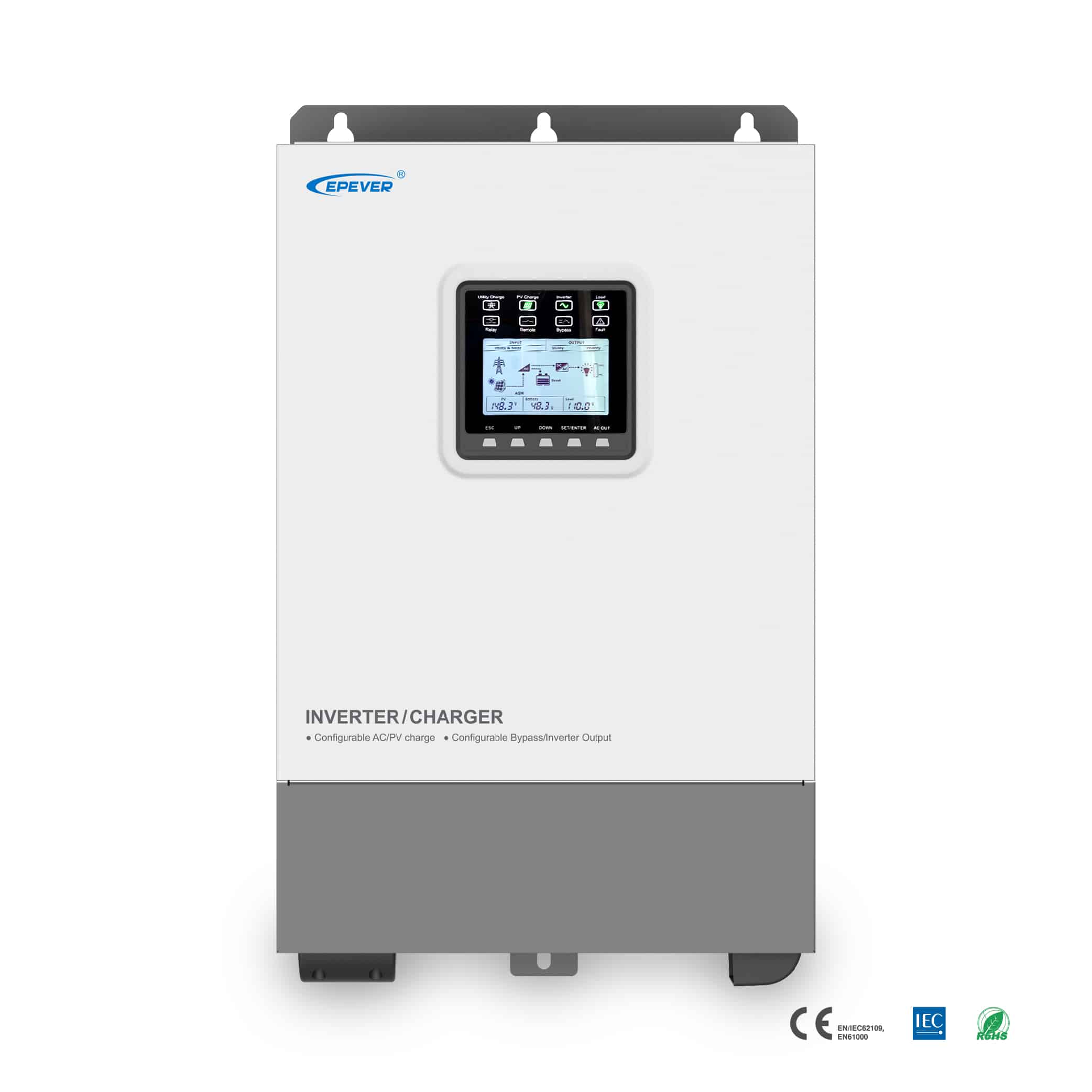
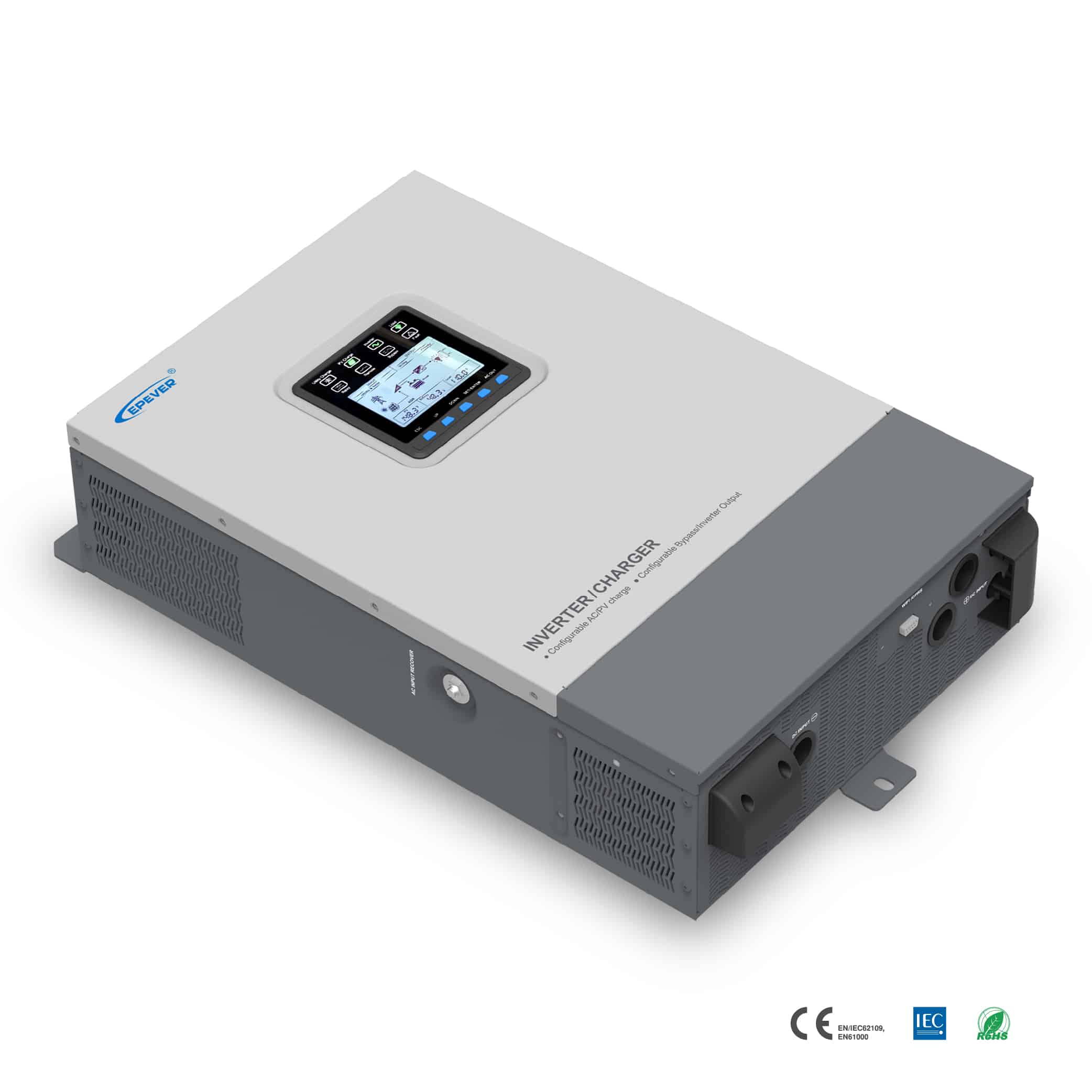
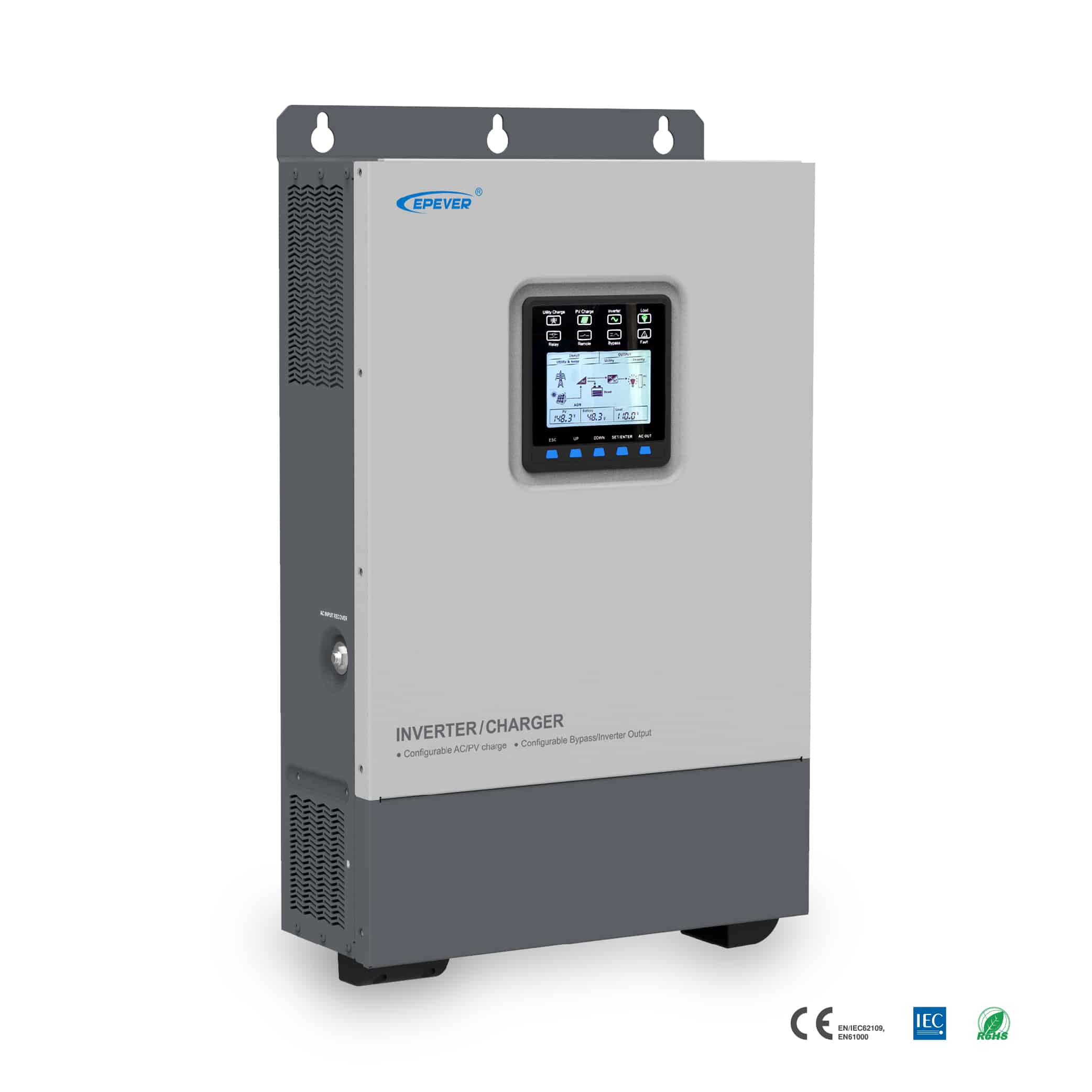
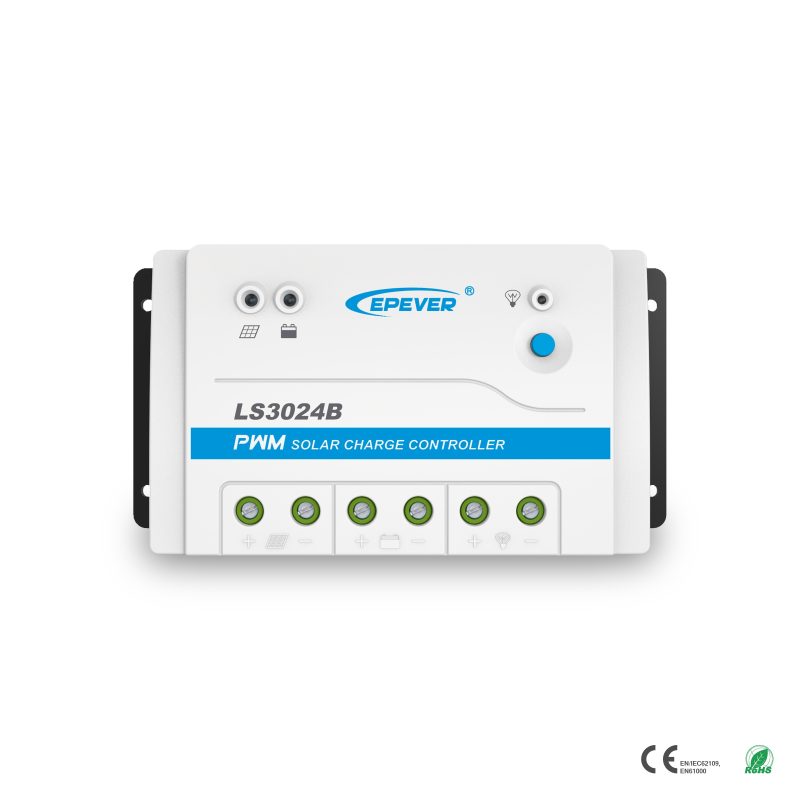

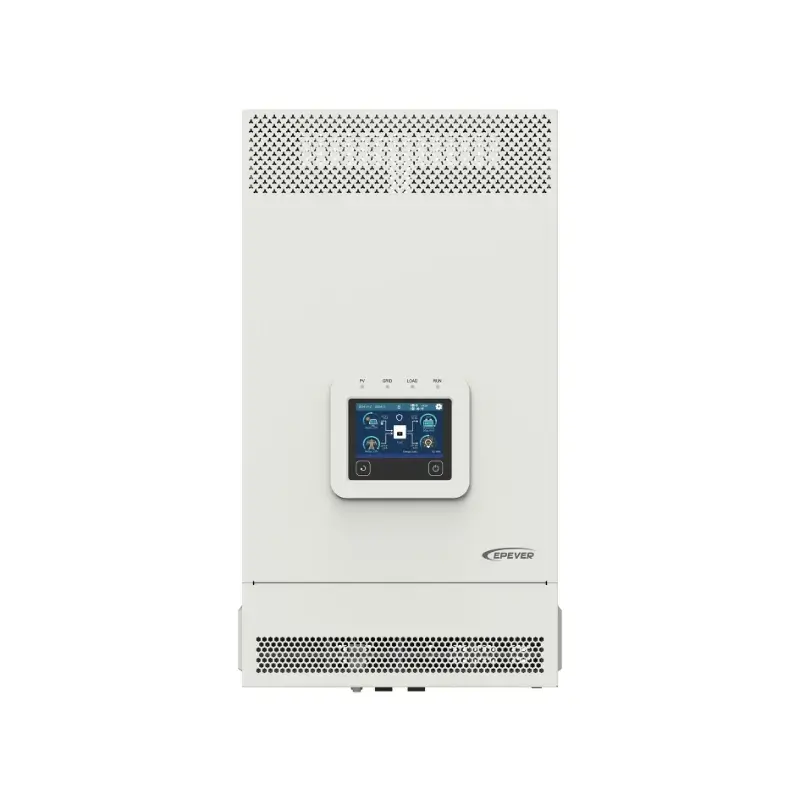
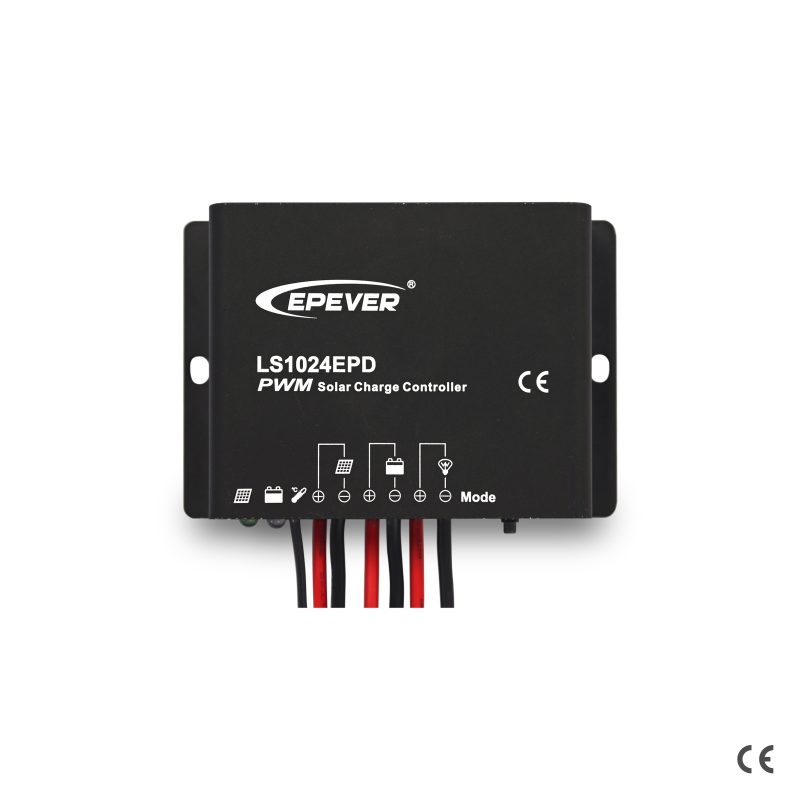
seyed reza gilani –
excellent
Massimiliano –
Iust installed: it runs good during these early weeks of work. The unit is powerful, low noise inverter, fast response also with 2,5 kW electric motor powertools start phase, commonly the hardest part for this type of device; another plus is the chance to shut down the load (if no need at all) in nightime to save battery discharge. UI is easy to use, also thanks to the complete user manual come with it. Hope many years of smooth use!
Gaudret –
Bonjour excellent produit très satisfait.
Pouvez vous me dire pourquoi les ventilateurs fonctionnent en permanence il ne s’arrête jamais même a faible puissance est-ce normal .
Je possède une batterie lithium lifepo4 16s ,quel sont les meilleur réglages pour une bonne utilisation de l’appareil et de la batterie merci .
mason@epever.com –
Hi sir, thanks for reaching out. When the temperature is over 35 degrees, the fun will start running.
Stan Papusa –
My inverter is having a buzz when working zzzzzz , what can be the problem ? Is brand new , LifePo4 Batteries 48V Look at the video
https://youtu.be/B4mt0oJu8Yw
mason@epever.com –
Hi, thanks for your comments and suggestions. The voice may come from the cooling fans because of the high temperature, or from the mofets switch. Ventilation is highly recommended if mounted in an enclosure.
Zsolt –
I installed a Uphi 5000w inverter, but the fan works continuously even with minimal load (100-200w). The ambient temperature is 20 Celsius.
mason@epever.com –
Hi Sir, thanks for reaching us. The fan’s running is not only affected by the external temperature(usually 27 Celsius), but also the internal temperature(usually 42 celsius).
Gaudret –
Bonjour
Jai epever hybride modele up5000-hm8042 quel est le meilleur réglage en 16s des paramètres pour une batterie lithium 48v lifepo4 ,et pouvez-vous me dire a quel voltage minimum il commence a travaillé merci
pablo salazar avalos –
Hello, I bought an inverter model UP3000-HM5042 and it stopped delivering 220Vac output voltage. What I can do?
mason@epever.com –
Hi Sir, thanks for reaching us. Please check the battery power, and if there’s a warning from Upower-hi. If both are correct, please send us an email to support@epever.com.
Jean –
Hola, tengo un EPEVER UPOWER HI de 5000W. El ventilador funciona permanentemente con una intermitencia de 1s. Eso es normal?
mason@epever.com –
Hi Sir, thanks for reaching out. You could first check the outside temperature, as long as the outside and device temperatures are higher than 27 degrees, the fan will start. Then you could run it overnight, and stop running when you wake up. Finally, restart it after the device cool down completely (don’t forget to connect the battery).
Michael –
Is the DC side of the inverter galvanically isolated from the AC side?
Is there a protective device against AC and/or DC residual currents?
mason@epever.com –
Hi Sir, thanks for reaching us. The DC side and AC side circuits are isolated, and there is no earth leakage protection in Upower-Hi.
Daniel K –
Hello, is there a manual for the 24v model (the included manual is for 48v). Is there an option – restore factory settings
sabrina@epever.com –
Hello. The manual for 48v model also applies to the 24v model. Also, there is no restore factory setting option.
Mack –
I have purchased the Unit 5000W Inverter/Charger, and I wonder if I can add a 12 x 375w panel or even more or if there is a limit up to 4000w that I can’t excide. My handyman says I can’t, but is he right?
chenyaohua@epever.com –
Hello sir, regarding your purchase of the 5000W inverter/charger unit, it is technically possible to add 12 x 375W solar panels or even more without overloading the inverter/charger unit. However, it’s important to note that any excess power beyond the rated capacity of the inverter/charger unit will be wasted, as the unit can only output its rated power. Therefore, adding additional solar panels may not result in extra power output.
It is crucial to ensure that the Voc (open-circuit voltage) of the added solar panels does not exceed the limits of the inverter/charger unit. This will ensure the proper functioning and safety of the system.
I hope this helps address your concerns. If you have any further questions, please feel free to ask!
Rupa –
Good day – why would the enagement of Utilty Charge cause my Home Earth Leakage to trip?
chenyaohua@epever.com –
Hello sir, we are wondering if you had grounded the battery or the output neutral line.
Actually, we do not recommend grounding any lines, and if your Utility had been grounded, please do not ground any part of your solar system.
Martin –
Greetings. I have a comment, the same as Rupa. Sometimes, when my UP3000-HM10022 Inverter changes to BYPASS mode (when the batteries reduce below Aux Mode On volts), the MCB circuit breaker on my Utility consumer unit will switch off.
What is the cause of this? Does the UPOWER take too much currnet too quickly for my MCB?
As shown in the manual section 2.5.4 – I have a GROUND attached to the AC LOAD circuit (this is a GROUND rod adjacent to the INVERTER, this GROUND is not connected to the UTILITY GROUND).
As shown in section 2.5.6 – I have only connected the LIVE and NEUTRAL from my Utility circuit – not the GROUND.
Wht does chenyaohua@epever.com say above: “we do not recommend grounding any lines, and if your Utility had been grounded, please do not ground any part of your solar system”
This appears to contradict section 2.5.4 of the manual.
Please recommend a solution to this, because when my Utility MCB trips – then I must manually reset (before the fridge/freezer melts).
Apart from this problem, the UP3000-HM10022 works well as expected.
chenyaohua@epever.com –
Hello sir, except for grounding the casing of the inverter/charger, grounding is not recommended for other parts of the solar power system. We advise disconnecting the load grounding. Thank you.
Tamas –
Hello,
I have this product operating in no-battery mode at the moment. When I check the PV/AC current on the built-in display or in solar guardian, they seem to be correct. But Utility current is always 0 (0 Amps. 0 Watts). I have a power meter on utility side showing the currect ac usage, but inverter is always 0. What is the reason/can I find the accurate power consumption / total utility input somewhere?
chenyaohua@epever.com –
Hello there,
Apologies for any confusion. In no-battery mode, the ‘Utility current’ display only shows charging-related information. It will stay at 0 when operating without a battery because all power is used directly for your load. For accurate power consumption and utility input, rely on your external power meter on the utility side.